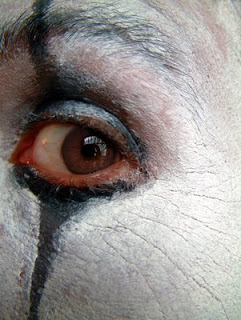Kicking things off today, I’m thrilled (no pun intended—sorry) to announce a SUPER DUPER BRAND NEW CONTEST. We’re holding a giveaway this week:
Comment on our posts from now through next Wednesday, and we here at The Kill Zone will toss your name in the hat for a $50 gas card. I know, that’ll buy you what, roughly 2 gallons? Hey, don’t blame us. We’re not the ones gouging, just a loveable group of writers trying to give your wallet a break…
And now, on to…BAD VILLAINS
We’ve all seen them. Those beady-eyed little guys wringing their hands as they chortle (ever notice that? Heroes never, ever chortle. The minute a character does that you just know he’s evil). They generally want to take over the world, but might be willing to settle for killing someone in a particularly terrible way. And they’d just love to tell you all about it first. One classic bad villain trait is that they live to hear themselves talk. In my humble opinion what made the Austin Powers films so funny was the “Dr Evil,” character, who epitomized every bad villain cliché. (Remember the group therapy scene with his son? “My childhood was typical. Summers in Rangoon, luge lessons. In the spring we’d make meat helmets. If I was insolent, I was placed in a burlap bag and beaten with reeds. Pretty standard, really.”) Hannibal Lecter was scary, sure, but the ultimate villain has to be Dr. Evil. Who else could come up with an “evil petting zoo?”
the Austin Powers films so funny was the “Dr Evil,” character, who epitomized every bad villain cliché. (Remember the group therapy scene with his son? “My childhood was typical. Summers in Rangoon, luge lessons. In the spring we’d make meat helmets. If I was insolent, I was placed in a burlap bag and beaten with reeds. Pretty standard, really.”) Hannibal Lecter was scary, sure, but the ultimate villain has to be Dr. Evil. Who else could come up with an “evil petting zoo?”
For me at least, villains are the most difficult characters to create. The heroes and heroines, laughable/loveable sidekicks, and victims are easy, I could practically write those in my sleep (well, not really. But you know what I mean).
But a villain that comes off as frightening and not comical is a far different beast. It’s all too easy to slip into mwa-ha-ha mode. Worse yet is to have them engage in “monologue-ing,” explaining monotonously why they’re doing what they’re doing, and how they’ll get away with it (when of course, that discourse inevitably leads to their downfall).
It’s ha rder still to avoid clichés. After all, since the beginning of recorded time nearly every story has featured a villain, from Medusa to Iago to Mr. Hyde. Joe’s post yesterday noted how many classic villains are fairly interchangeable. And that’s precisely the problem: how do you make your villain new and unique, not just another Hannibal-esque hybrid?
rder still to avoid clichés. After all, since the beginning of recorded time nearly every story has featured a villain, from Medusa to Iago to Mr. Hyde. Joe’s post yesterday noted how many classic villains are fairly interchangeable. And that’s precisely the problem: how do you make your villain new and unique, not just another Hannibal-esque hybrid?
In my latest book, Boneyard, I had a particularly hard time. One of my villains came to life easily. I added some traits to him in successive drafts, but felt like I nailed him down without too much trouble.
And then there was the other guy. Man, he was a problem (serves me right for having two bad guys, I suppose). I had done voluminous research on serial killers in an attempt to make him as believable as possible, but kept encountering the same pitfalls. I felt at times like I was making villain soup, adding a pinch of Bundy and a dash of Dahmer, but he still seemed bland. Up until the final draft I cast him as a religious fanatic, quoting scripture to explain his motivation. But every time I r ead over his dialogue I found myself squirming. It felt very forced and contrived, never a good thing.
ead over his dialogue I found myself squirming. It felt very forced and contrived, never a good thing.
Someone once said, “the villain is the hero of his own story.” It’s an important thing to remember. We’ve all known people who have been able to justify terrible acts to themselves. They did it for the greater good, or they didn’t have a choice. To me, those are believable villains.
So I slashed away with my red pen, leaving far more of his motivations to the reader’s imagination. In the end, I was happy with him. But with every book the problem must be freshly confronted. I’m wrestling with a different guy now, a real slimeball who’s motivated both by greed and hatred. Yet at the moment he’s more whiny than scary, not a good thing. And he keeps pulling at his handlebar moustache and asking about the rent, which is just annoying. Ah well. Hopefully I’ll get him by the line edits…
So, dear reader, what say you? Who’s your favorite “bad villain,” and why?![]() Remember: comment and your car might thank you for it later. Tune in next Thursday when I announce the winner and ponder why Second Life avatars only seem to come in one breast size.
Remember: comment and your car might thank you for it later. Tune in next Thursday when I announce the winner and ponder why Second Life avatars only seem to come in one breast size.





















